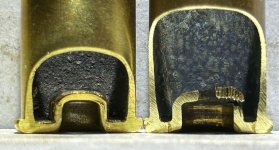THE PILGRIM
Member
Wyatt and others - Lonely Are the Brave - the first part of Kirk's escape run was filmed on the La Luz Trail.
That's just North of Town going up the West side of the Sandia Mountains.
And the Deputy whose name I can't recall - was up on a big boulder.
The later 'disaster' sequence was shot South of here down near Socorro, NM.
That's just North of Town going up the West side of the Sandia Mountains.
And the Deputy whose name I can't recall - was up on a big boulder.
The later 'disaster' sequence was shot South of here down near Socorro, NM.

